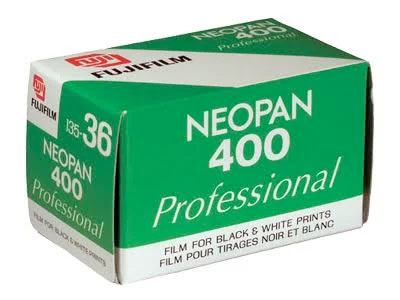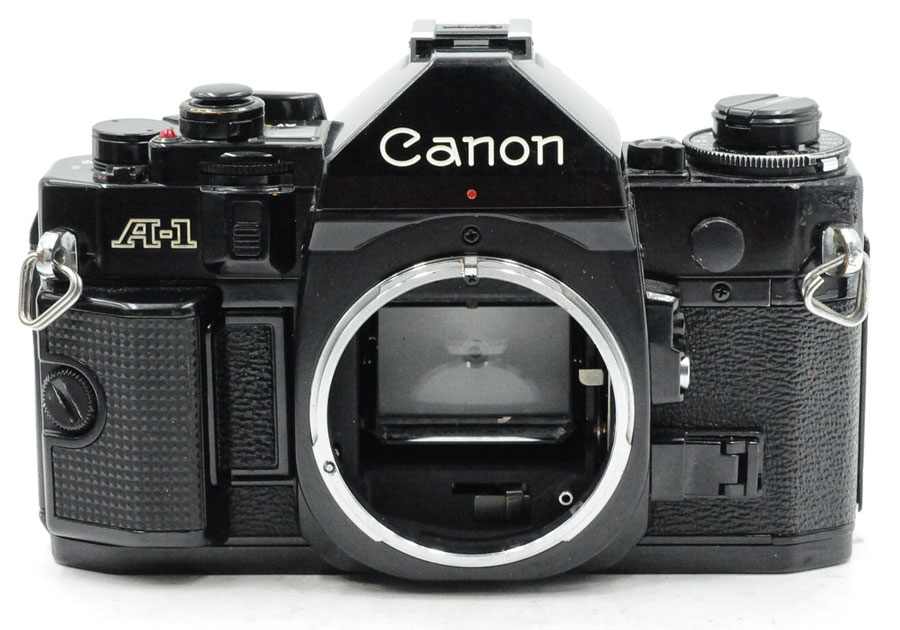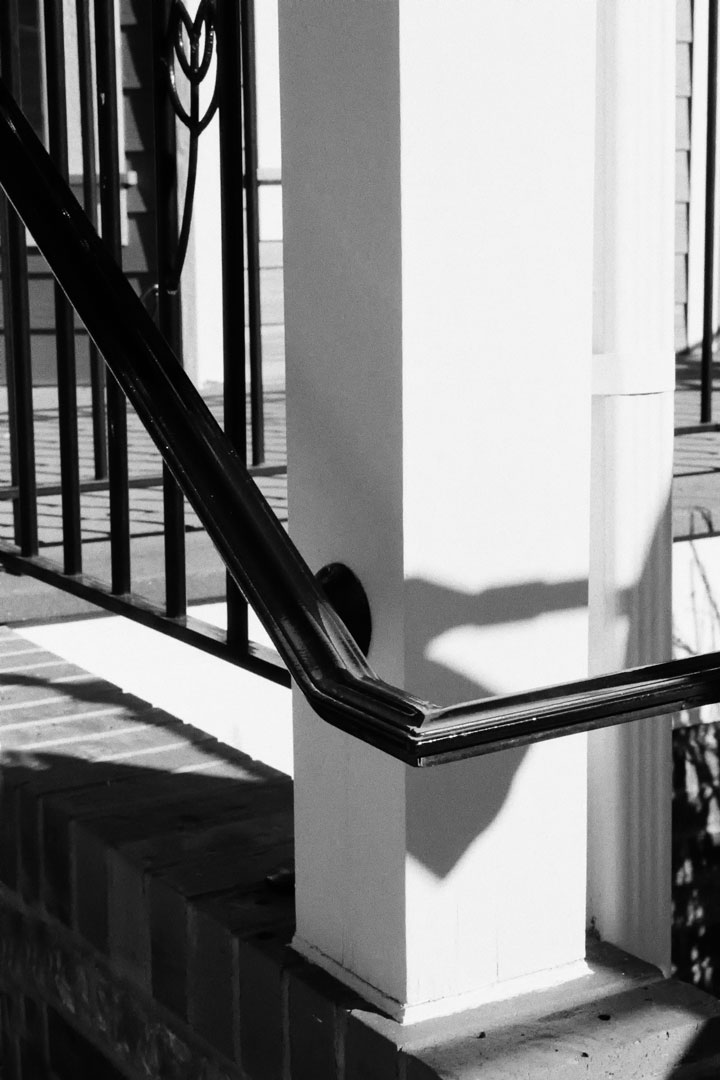Today’s Post by Joe Farace
 On a recent sunny morning I loaded my newly acquired, bargain Canon A-1 with a roll of expired (13 year old) Fujifilm Neopan 400 Professional that some consider “one of the greatest and most distinctive black and white emulsions ever produced.” My goal was a casual photo walk in downtown Parker, Colorado to test the camera and a FD 50mm f/3.5 macro lens.
On a recent sunny morning I loaded my newly acquired, bargain Canon A-1 with a roll of expired (13 year old) Fujifilm Neopan 400 Professional that some consider “one of the greatest and most distinctive black and white emulsions ever produced.” My goal was a casual photo walk in downtown Parker, Colorado to test the camera and a FD 50mm f/3.5 macro lens.
The Canon A-1 is a 35mm film SLR that uses the company’s FD-series of lenses. It was manufactured in Japan from April 1978 to 1985. According to Canon’s date code (inside the camera’s back where the film cassette sits) my camera was manufactured in June 1983. When I got this camera I thought it was an A-series trifecta but discovered there were three more versions: AT-1, AV-1 and the sorta autofocus AL-1 that was launched in March 1982. Because I can be obsessive (about some things) I’d like to get an AL-1 just for the novelty of its focus confirmation system but don’t know about the others.
The A-1 was the first SLR to offer an electronically controlled programmed auto exposure mode. It used a horizontal cloth focal-plane shutter with a range of 30 to 1/1000 sec plus bulb with flash sync at a less than ideal 1/60 sec. It measures a handy 3.6 x 5.6 x 1.9 inches in size and weighs 22 oz. Unlike most SLRs of the time, it was only available in black.
 The US introductory price for the body with FD 50 mm f/1.4 SSC lens was $625; the camera body generally sold for between $375 to $435 at a time back when the NY camera stores offered real discounts. I paid just $100.99 for a Near Mint (more Mint than Near) body that also included a Power Winder A that adds 6.4 oz to the package, plus the weight of four AA batteries.
The US introductory price for the body with FD 50 mm f/1.4 SSC lens was $625; the camera body generally sold for between $375 to $435 at a time back when the NY camera stores offered real discounts. I paid just $100.99 for a Near Mint (more Mint than Near) body that also included a Power Winder A that adds 6.4 oz to the package, plus the weight of four AA batteries.
I hear many complaints that modern DSLRs or mirrorless cameras are complicated. They’ve got nothing on Canon’s A-series SLR’s that are festooned with tiny buttons, levers and knobs. Surrounding the A-1’s battery test button, for example, is a collared switch that turns the LED display on in the viewfinder, which on my camera is bright and sharp. The A-1 can shoot three automatic exposure modes (Tv, Av and Program) as well as manual. In Manual mode, the LED readout does not indicate any over or underexposure. Instead, it just shows what aperture and shutter speed you’ve selected. Oh, and it says “M.” Yet n either Av or Tv mode one of the LEDs (shutter speed or aperture) will blink to indicate that you will need to make an exposure adjustment. Go figure.
 When it comes to the FD 50mm f/3.5 macro lens, there are divided opinions among all of the Internet experts and pundits. Some love it, saying it’s one of Canon’s sharpest lenses; while others say it’s not. Part of this confusion is there are two versions of the lens. Most older FD primes use 55mm filter threads while the newer ones use 52mm, as is the case with my 50mm macro lens. Nobody agrees which one is better. I did a half-a**ed brick wall test with the lens and will let you know what it shows. (see below) The lens has a magnification ratio of just 1:2 but with Canon’s 25mm Extension Tube it’s able to reach 1:1. My macro lens cost $75 on eBay and came with both caps, a lens hood and Canon’s FD25 extension tube. The lens is in true Mint condition making it a good buy because the included 1984 LA Olympics lens cap is worth twenty bucks by itself.
When it comes to the FD 50mm f/3.5 macro lens, there are divided opinions among all of the Internet experts and pundits. Some love it, saying it’s one of Canon’s sharpest lenses; while others say it’s not. Part of this confusion is there are two versions of the lens. Most older FD primes use 55mm filter threads while the newer ones use 52mm, as is the case with my 50mm macro lens. Nobody agrees which one is better. I did a half-a**ed brick wall test with the lens and will let you know what it shows. (see below) The lens has a magnification ratio of just 1:2 but with Canon’s 25mm Extension Tube it’s able to reach 1:1. My macro lens cost $75 on eBay and came with both caps, a lens hood and Canon’s FD25 extension tube. The lens is in true Mint condition making it a good buy because the included 1984 LA Olympics lens cap is worth twenty bucks by itself.
So how did the camera and lens perform? In operation they were both picture perfect but ultimately it will boil down to how does the film look? I sent the film to The Darkroom for processing and scanning on November 21 and it entered their production on November 29 with scans uploaded on November 30. (There’s a sneak preview at right.) Look for Part II of this saga after the film is processed and we not only take a look at the negatives and scans but more details on how the camera and lens performed in real word usage.
PS: Some readers have asked why I’m shooting film when it’s so expensive. Here’s my out-of-pocket costs for today’s post: The camera cost $100.99, the lens was $75, and the film? I don’t remember, I bought it in 2008. Processing and scanning the film will be $21.54 A new Nikon Z9 body is $5,496.95 plus lens and a CFexpress Type B / XQD memory card. While you can use an old version of Photoshop, like I do, an Adobe Photoshop subscription can cost $9.99-20.99 a month, depending on options.
If you enjoyed today’s post and would like to support this blog so I can to increase the coverage of film photography, please consider making a monthly contribution via Patreon. Memberships start at just $1.25 a month, with other levels support of $2.50 and $5 that include special benefits. If subscriptions are not for you, that same linked page lets you to make a one-time contribution. I also recognize that the pandemic has had an adverse effect on many people’s incomes, so if you would prefer to just send some good thoughts my way, that’s appreciated too.